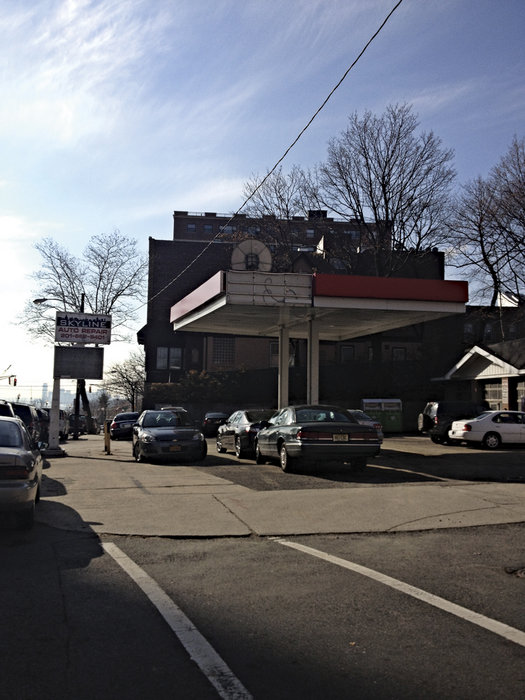After a recent meeting, the West New York Zoning Board hopes to make a ruling on the controversial Meridia Le Boulevard high-rise proposal the next time the board convenes, which will be in January, Board President Kenneth Blaine said this week.
Before the January meeting, representatives of Capodagli Properties, the firm hoping to build the high-rise, and West New York residents strongly opposed to its construction, will both submit summations of their arguments.
Blaine said that while it would be not be appropriate to comment on the proceedings until the board has reached a decision, he did say that he and his colleagues would be looking at the proposal with the best interests of the town and its residents in mind.
“We’ll be weighing the benefits and the detriments of the proposal, and looking at them fairly,” Blaine said. “We treat each application individually and equally.”
This may come as bad news for several hundred residents who have risen in opposition to the proposal, which would allow for a 13-story, elevator-style high-rise to be built on the corner of 67th Street and Boulevard East, on the site of a long-decrepit Exxon gas station. At the last Zoning Board meeting, resident Doug Borden attempted to enter into the record a 2009 zoning application for a similar building, the Alpy, which the board denied due to a request for a higher than average number of variances.
“Not one resident has shown up to any of these meetings and said one positive thing about this proposal.” – Rose Puerto
____________
The Alpy proposal was denied by the board on the grounds that it was “too much in too small an area, with a crowded roadway at its frontage.” The ruling goes on to say that “[the Alpy’s] benefits (expanding housing availability) do not substantially outweigh the existing detriments presented to to the existing roadways and neighborhoods.”
Borden, along with his wife Rose Puerto, and Joshua Breakstone, the founder of the website concerned-citizens.net, said that because The Alpy proposal and the Meridia Le Boulevard proposal are so similar, they hope the board will vote to deny Capodagli’s application.
In fact, Breakstone said, if the Meridia Le Boulevard application were approved, the project would have to apply for more variances than The Alpy would have had to apply for had it been approved.
Breakstone’s website outlines 13 such required variances, which range from the minimum allowed lot surface area (zoning laws require an elevator building to have 40,000 square feet, the Exxon lot is only 13,194 square feet) to the percentage of said lot which is allowed to be occupied by the building (the law requires that only 75 percent can be occupied, while Meridia would occupy 95 percent of the lots). Additionally, the town, which is the third most densely-populated in the country, requires that only 80 units can be built per acre, while the Meridia would have 406 units per acre.
The concerned residents said that the facts were incontrovertible, and that they trusted that the zoning board would make what Breakstone called “the reasonable and responsible decision.”
“I have faith that they’re going to do the right thing,” Puerto said. “Not one resident has shown up to any of these meetings and said one positive thing about this proposal. Even the board’s own expert witness said that the space would be much better used as a park.”
Borden, Breakstone, and Puerto have made the case that the town’s zoning laws, which were adopted in 1972, were written with exactly this type of proposal in mind. Meridia Le Boulevard would decrease the amount of open space available in the area, would congest traffic and cut down on parking significantly, would cause a canyon effect on light, wind and noise, and simply hurt the aesthetics of the area, said Borden.
“The zoning laws set out by our town’s elders in 1972 specifically warn against allowing properties like this to be built,” he said.
The zoning laws state that the board’s mission be “to lessen congestion in the streets […], to provide adequate light and air and open space […], to prevent overcrowding of land or buildings […], and to promote a desirable visual environment.”
Jeffrey Kantowitz, the attorney representing residents opposed to the Meridia, said that the developers had not, up to this point, shown that their proposal meets necessary standards.
“I hope that the board will look at the variances that the project would have to apply for, and the extent to which those variances would affect the area,” he said.
“If you look up and down Boulevard East, there’s sort of a pattern,” said Puerto. “If there’s a high rise on one side of the building, there’s not one opposite it, and vice versa. That’s what makes Boulevard East beautiful, it’s what guarantees that there is open space. We don’t want West New York to become New York City.”
Neither Capodagli Properties, nor its lawyer, Alvaro Alfonso, returned phone calls by press time.
